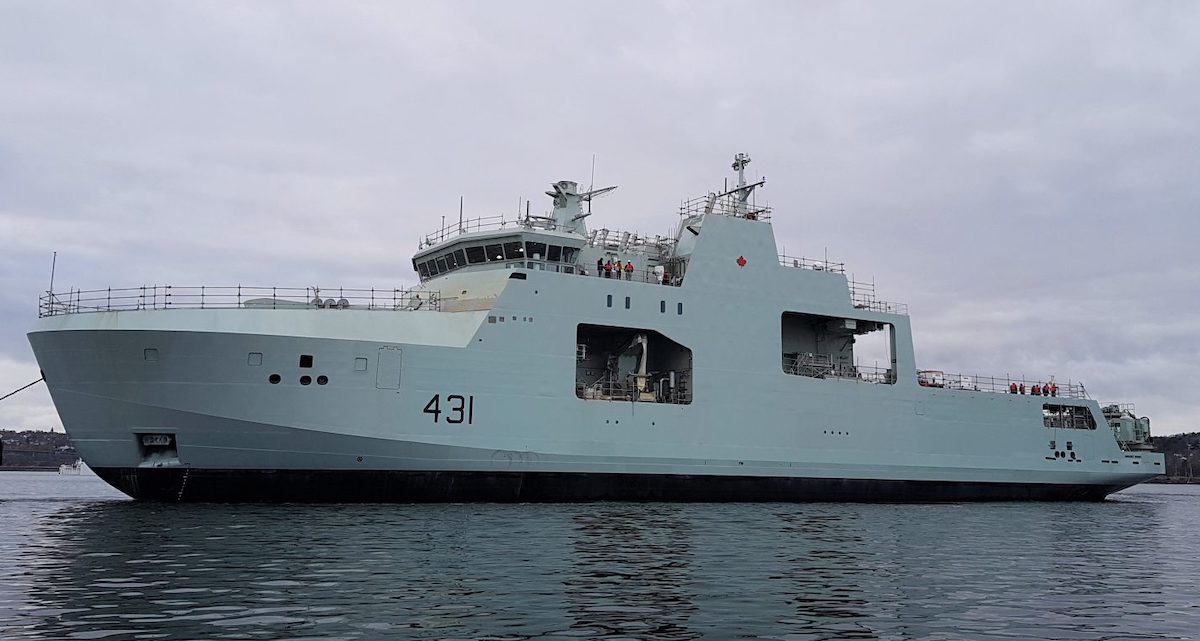Future One
It was a dark January evening in 2030, when the Chief of the Defence Staff (CDS) took the secure call from the Commander Canadian Joint Forces Command (CJOC). The Commander CJOC advised the CDS that Canadian Rangers were reporting several periscope sightings in the vicinity of the Gulf of Boothia and Foxe Channel. The Foxe Channel sighting was confirmed by an Air Nunavut sighting. The Commander RCN(CRCN) joined the call and the CDS asked Commander CJOC what resources were available to search the two areas. CJOC had no resources in the area. The CRCN indicated that HMCS Margaret Brooke was transiting the Strait of Bell Isle, in ice, and it would take her at least a week, barring ice delays, to arrive at the southern entrance to Foxe Channel.
When pressed about Arctic sensors, the CRCN reminded the CDS that the original project was defunded in the late 1990s for budgetary reasons and that the DRDC effort Northern Array Project also died due to both funding issues and a general lack of interest by both government and the leadership of the CAF. The CRCN also advised the CDS that ice-penetrating sonobuoys had never been a priority in the investment plan nor had the long-range Unmanned Underwater Vehicles (UUVs) equipped with strategic sensors.
She also advised the CDS that the one remaining Victoria-class submarine, which could not operate under ice, could be redeployed but would take at least 10 days to arrive at the ice edge. She reminded the CDS that regrettably there had been no appetite either politically or within the CAF to move forward with a submarine replacement program based on Canadian requirements.
Finally, the Commander of the RCN opined that the threat from these latitudes was a depressed SLBM and cruise missile launch against North America reducing flight time to mere minutes, perhaps insufficient time to react. The Commander of the RCAF chimed in to remind the CDS that even if a ship was able to get north the strategic Unmanned Aerial Vehicle (UAV) that could be used as a communications relay and ice surveillance platform was shelved to acquire a tactical UAV in support of the army. The CDS asked his commanders what they would recommend he advise the Prime Minister (PM). Collectively they stated that the PM needs to advise the President of the USA (POTUS) that there is an imminent strategic nuclear threat operating in the Canadian Arctic, that Canada has no capability to deal with the threat, and request the USA to urgently deploy SSNs and supporting systems to deal with the threat. This was not a call that the CDS wanted to make.
Future Two
It was a dark January evening in 2030 when the CDS took the secure call from the Commander Canadian Joint Forces Command (CJOC). The Commander CJOC advised the CDS that the fixed sentinel sensors in the approaches to the Canadian Arctic had detected a SLAMMER-class SSBN and a THUMPER-class SSGN entering Canadian waters. He further indicated that they both appeared to be transiting towards the Gulf of Boothia. Given the current increase in world tension, the Commander CJOC advised the CDS that he had ordered the launch of the CANSTRAT UAV from Iqaluit to act as a communications relay for the TROUT long-range strategic UUVs that had been deployed to trail the intruders. Anticipated intercept in about 24 hours.
The Commander of the RCN joined the conversation and indicated that she had ordered the new Canadian submarine Manitoba, now on acceptance trials and operating in the vicinity of the Hudson Strait, to chop to CJOCs control in support. She reminded the CDS that the Manitoba, a submarine designed and built to Canadian, not foreign requirements was able to operate under the ice and also carried the PIKE UUV, which could be deployed in support of the TROUT UUVs.
Finally, at this point, the Commander of the RCN stated that HMCS DeWolf, the lead Arctic Patrol Vessel, had been ordered to deploy and to chop to CJOC for support as she also carried the TROUT long-range UUV. The CDS thanked the commanders. In thanking the commanders, he opined that, when he was VCDS, he did not support all of this Arctic and homeland defence capability or indeed the new submarines as he was, by nature, inclination, and culture focused on land operations mostly in support of NATO in Europe. He had not realized how complex maritime and air issues were or indeed the complexity of the Arctic and the critical role the Arctic plays in Canadian defence and security. On thanking his commanders, the CDS called the PM advising that an SSBN and an SSGN had entered Canadian territorial and internal waters counter to international law, that they both had been identified and that sub-surface, surface, and air resources have been deployed to track and to shadow the two intruders. The CDS also reminded the PM that the TROUT-class UUV was armed and two were expected to be in firing range of the intruders within 24 hours. The PM thanked the CDS, directed the Minister of Foreign Affairs to engage the appropriate diplomatic actions, and called the POTUS.
Which of these endings would Canadians want? Do Canadians understand the potential risks of not focusing on the Arctic and the sub-surface maritime environment?

